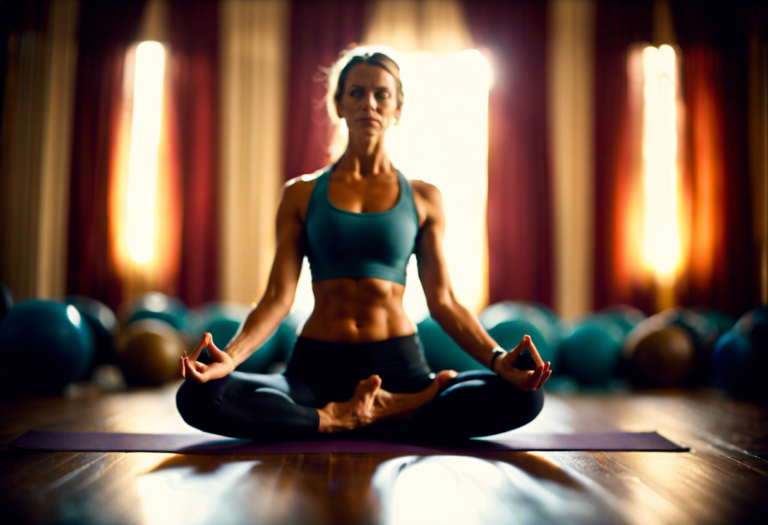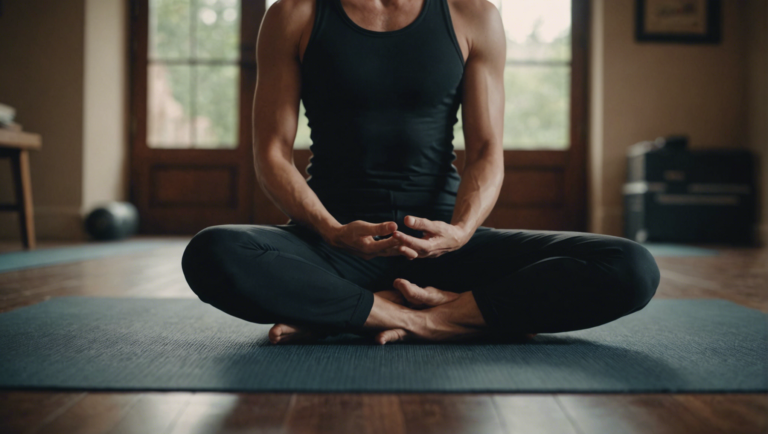Essential Guide: Yoga Poses To Avoid When Pregnant
Essential Guide: Yoga Poses to Avoid When Pregnant
Yoga, a practice beloved for its holistic benefits on the body and mind, adapts through every stage of life, including pregnancy. However, not all yoga poses are suitable for expectant mothers. Awareness and modification are key in continuing a safe yoga practice during this special time. This guide aims to shed light on particular yoga positions that should be approached with caution or avoided entirely to ensure both mother and baby’s health and wellbeing.
The Why: Understanding the Restrictions
Pregnancy introduces significant changes to the body, including hormonal fluctuations, increased blood volume, and a shifting center of gravity. These changes can affect balance, flexibility, and overall comfort. Furthermore, as the fetus develops, especially after the first trimester, pressure on the abdomen should be minimized. This is why certain yoga poses become less advisable, as they might compromise blood flow, cause discomfort, or even risk the health of both the mother and the developing child.
Deep Backbends: A Risky Stretch
Exercises such as full wheel (Urdhva Dhanurasana) or camel pose (Ustrasana) deeply engage the back muscles and abdomen, extending the belly in a way that can be harmful during pregnancy. These intense stretches can put undue stress on the abdominal region and potentially lead to diastasis recti, a condition where the abdominal muscles separate. A focus on gentle stretching and strengthening exercises that support rather than strain the abdomen and back is encouraged instead.
Strong Twists: Avoiding Internal Pressure
In non-pregnant practitioners, twists are celebrated for their detoxifying and invigorating effects on the body. However, during pregnancy, deep twists from the abdomen can exert pressure on the growing uterus and reduce space for the baby. This doesn’t mean all twists need to be avoided; open, gentle twists that emphasize movement from the shoulders rather than the abdomen can be beneficial when practiced with care.
Inversions: The Gravity of the Situation
Inversions such as headstands (Sirsasana) or shoulder stands (Sarvangasana) are generally advised against during pregnancy. The risk of falling and causing injury to the mother or baby significantly outweighs the potential benefits. Additionally, inversions can alter blood flow which is not advisable during this delicate time. For those who want to maintain some level of inversion in their practice, modifications like legs up the wall (Viparita Karani) can be a safer alternative, offering some of the circulatory benefits without the associated risks.
Prone Poses: Protecting the Front Body
As the belly grows, any poses requiring practitioners to lie flat on their stomachs, such as cobra (Bhujangasana) or locust pose (Shalabhasana), become not only uncomfortable but impractical and potentially harmful. These poses can put direct pressure on the uterus and should be substituted with safer alternatives that offer similar benefits without the risk.
Hot Yoga: The Heat is On
The elevated temperatures in hot yoga classes can lead to overheating and dehydration, which are especially dangerous during pregnancy. The body’s core temperature should be carefully regulated to ensure a safe environment for the developing fetus. Pregnant women are advised to opt for prenatal classes or yoga practices in well-ventilated, temperature-controlled rooms.
Listening to Your Body: The Ultimate Guide
More than any list of do’s and don’ts, the most important guideline is to listen to your body. Pregnancy is a unique experience, and what feels good for one person may not for another. Consulting with a healthcare provider and a qualified prenatal yoga instructor before continuing or starting a yoga practice during pregnancy is essential. These professionals can provide personalized advice and modifications to ensure a safe and beneficial yoga journey throughout these transformative months.
In reflecting on this essential guide, the overarching message is one of mindfulness and adaptation. Embracing the changes that come with pregnancy allows for a yoga practice that supports, rather than challenges, this natural process. By avoiding certain poses and emphasizing those that nurture and respect the body’s current state, expectant mothers can maintain their bond with yoga, reaping its spiritual and physical benefits while safeguarding their well-being and that of their unborn child.
Benefits of Practicing Yoga During Pregnancy
Embarking on a nine-month journey of pregnancy brings with it a constellation of changes, challenges, and emotions. Among the myriad of advice offered to expectant mothers, the practice of yoga stands out for its holistic benefits, touching upon physical, mental, and emotional well-being. Delving into the world of prenatal yoga reveals a host of advantages, from easing pregnancy aches to preparing for labor.
Enhancing Physical Health and Well-being
Regular engagement in prenatal yoga sessions has been shown to significantly improve physical health during pregnancy. One of the most immediate benefits is the relief from common pregnancy-related discomforts such as back pain, nausea, and headaches. Yoga poses, specifically tailored for expectant mothers, help in strengthening the muscles of the pelvis and back, enhancing posture, and reducing the discomfort associated with the growing belly.
Additionally, yoga aids in managing and reducing the risk of gestational diabetes and high blood pressure, two conditions that are of concern during pregnancy. By promoting healthy weight gain and improving circulation, yoga contributes to the overall health of both mother and baby.
Boosting Mental Health and Stress Management
The journey of pregnancy is not just a physical transformation but an emotional odyssey as well. Yoga, with its roots deep in mental discipline and mindfulness, offers powerful tools for managing stress and anxiety. The practice of focused breathing and meditation helps in calming the mind, providing a sense of tranquility and relaxation. This reduction in stress is not only beneficial for the expectant mother but also for the baby, as high stress levels during pregnancy can impact fetal development.
Moreover, yoga creates a space for mothers-to-be to connect with their changing bodies and developing babies on a deeper level. This connection fosters a positive pregnancy experience and can even ease fears and anxieties about childbirth.
Preparing for Childbirth
Prenatal yoga does more than just alleviate pregnancy symptoms and promote mental well-being; it also plays a crucial role in preparing the body for labor and delivery. Certain yoga poses and exercises focus on increasing flexibility, strength, and endurance – all of which are invaluable during childbirth. The practice of breathing exercises, particularly, equips expectant mothers with techniques to manage pain and stay focused and calm during labor.
The emphasis on mindfulness and listening to one’s body in yoga can also empower women, making them more confident in their ability to navigate the challenges of labor and childbirth. This mental and physical preparation can lead to a more positive birthing experience and, in some cases, a smoother recovery postpartum.
Fostering Community and Support
Joining prenatal yoga classes offers an invaluable opportunity to connect with other expectant mothers. This sense of community can offer emotional support and provide a platform for sharing experiences, concerns, and excitement about the journey ahead. It can be incredibly reassuring to engage with others who are navigating the same transitions and challenges.
Making Safety a Priority
While the benefits of practicing yoga during pregnancy are vast, it’s crucial to approach the practice with caution. It’s advisable to seek classes led by instructors certified in prenatal yoga, who can provide guidance on modifying poses to suit individual needs and stages of pregnancy. Listening to one’s body and avoiding overexertion is key to a safe and beneficial yoga practice during this special time.
In the landscape of prenatal care, yoga emerges as a multifaceted gem, offering a holistic approach to navigating the complexities of pregnancy. From enhancing physical health to preparing for childbirth, and fostering a deep sense of mental well-being, the benefits of engaging in this ancient practice are profound. For expectant mothers seeking a path that nurtures body, mind, and spirit, prenatal yoga offers a promising journey.
Safe Alternatives: Yoga Poses Recommended for Pregnant Women
Pregnancy is a time of profound transformation, not just physically but in every aspect of a woman’s life. It’s a period where health and well-being take center stage, with many expectant mothers turning to yoga for its numerous benefits. However, as beneficial as yoga can be, it’s crucial for pregnant women to navigate its practices with care, choosing poses that support rather than strain their changing bodies. Here, we explore safe yoga poses recommended for pregnant women, offering a guide to maintaining fitness while nurturing life within.
Prenatal Yoga: A Blend of Gentle Movement and Breath
Yoga during pregnancy isn’t just about staying fit. It’s a holistic approach to prepare the body and mind for childbirth, emphasizing gentle movement, breath work, and mental well-being. The following yoga poses are specifically selected for their safety and benefits during pregnancy.
Cat-Cow Stretch for Flexibility and Comfort
This gentle flow between Marjaryasana (Cat Pose) and Bitilasana (Cow Pose) is ideal for pregnant women. It helps in stretching the spine and relieving tension in the lower back, a common complaint as pregnancy progresses. To perform, start on all fours, ensuring your wrists are under your shoulders and your knees under your hips. Inhale as you arch your back gently, lifting your head and tailbone towards the sky (Cow Pose), and exhale as you round your spine towards the ceiling, bringing your chin towards your chest (Cat Pose).
Side Angle Pose for Stability and Strength
Parsvakonasana (Side Angle Pose) can be modified for expectant mothers by using props like a chair for support. This pose strengthens the legs, stretches the sides of the body, and opens the hips—areas that bear the brunt of pregnancy’s physical demands. Stand with your feet wide apart, turning one foot out by 90 degrees. Bend the knee of the turned-out foot to form a right angle, and place your forearm on your thigh for support. Stretch your other arm overhead, reaching in the direction of your bent knee. Repeat on the other side.
Supported Bridge Pose for Relaxation
Setu Bandhasana (Bridge Pose) can be adapted with the support of a yoga block for a restorative version that is safe during pregnancy. This variation helps relieve stress, reduce back pain, and improve circulation. Lie on your back with your knees bent and feet flat on the ground, hip-width apart. Place a yoga block under your sacrum (the flat part of your lower back) and relax your weight onto the block, keeping your shoulders and head on the mat.
Child’s Pose for Gentle Stretching
Balasana (Child’s Pose) is a restorative pose that gently stretches the hips, thighs, and lower back, providing relief and comfort to the pregnant body. Start on your knees, spread them apart to make room for your belly, and fold forward, extending your arms in front of you. Allow your forehead to rest on the ground or a yoga block for extra comfort, lingering in the pose as long as it feels good.
The Importance of Listening to Your Body
While these poses are generally safe for pregnant women, it’s crucial to listen to your body and avoid any movements that cause discomfort, no matter how mild. Additionally, consulting with a healthcare provider before starting or continuing a yoga practice in pregnancy is essential.
Yoga during pregnancy offers a myriad of benefits, from enhanced physical health to mental calm. By choosing poses that align with the body’s current capabilities and challenges, expectant mothers can enjoy a practice that supports them through each stage of pregnancy, culminating in a more mindful and prepared approach to childbirth and beyond. Remember, the primary goal of prenatal yoga is to foster a deep connection with oneself and the life being nurtured within.
The Importance of Consulting a Healthcare Provider Before Starting Yoga in Pregnancy
Embarking on a yoga journey during pregnancy is not just a trend; it’s a holistic approach to maintaining fitness, ensuring relaxation, and preparing for childbirth. However, the significance of consulting a healthcare provider before starting such a regimen cannot be overstated. Acknowledging this, let’s delve into why medical advice is paramount and how it benefits expectant mothers.
The Essential Role of Professional Health Guidance
When considering yoga in pregnancy, the foremost step is obtaining clearance from a healthcare provider. This step is crucial as it ensures the safety of both the mother and the unborn child. Pregnancy is a time of significant physical and hormonal changes, making it necessary to tailor yoga practices to suit individual health profiles. A healthcare provider can offer insights into any specific risks or contraindications based on one’s medical history, current health status, and pregnancy progression.
Tailoring Yoga Practices to Pregnancy Stages
Understanding the bodily changes during different trimesters helps in selecting the most beneficial yoga poses. The first trimester, being a delicate period, may require a more cautious approach, while the second and third trimesters allow for a bit more flexibility in practice. A healthcare professional can provide recommendations on modifying poses to accommodate the growing belly and shifting center of gravity, ensuring practices that foster rather than hinder well-being.
Identifying Pregnancy-Specific Health Conditions
Certain health conditions like preeclampsia, gestational diabetes, or low placenta can significantly influence the type of physical activity deemed safe during pregnancy. Healthcare providers are equipped to identify these conditions and guide expectant mothers on the appropriate level of activity. This precautionary measure not only safeguards the mother’s health but also promotes optimal fetal development.
Benefits of Customized Yoga Sessions
With professional input, yoga sessions can be customized to address specific pregnancy discomforts, such as back pain, sciatica, or insomnia. Exercises focusing on relaxation and breathing can greatly enhance the pregnancy experience by reducing stress and improving oxygen flow to the fetus. Moreover, targeted yoga practices have been known to aid in labor preparation by strengthening the pelvic floor muscles and improving endurance.
The Psychological Impact of Informed Yoga Practice
Seeking guidance from a healthcare provider before starting yoga can also have significant psychological benefits. It instills a sense of security, knowing that the chosen exercises are safe and beneficial. This peace of mind can enhance the overall yoga experience, allowing for a deeper connection between the mother and her baby.
Sustaining Health Beyond Pregnancy
The advice doesn’t end with pregnancy. Postpartum, a healthcare provider can recommend when to safely resume or escalate yoga practices, contributing to a smoother recovery and sustained health and well-being. This long-term perspective is vital for new mothers navigating the challenges of postpartum recovery and motherhood.
Yoga during pregnancy is a valuable tool for nurturing health, well-being, and maternal-fetal bond. However, the importance of professional health guidance cannot be understated. Consulting a healthcare provider ensures a yoga regimen that is safe, tailored, and most beneficial, paving the way for a positive pregnancy and beyond. This collaborative approach between healthcare providers and expectant mothers highlights a holistic path to wellness, emphasizing the unique needs and well-being of every pregnancy journey.
Tips for Modifying Your Yoga Practice for Each Trimester
Pregnancy is a time of profound transformation, requiring adjustments in many aspects of life, including your yoga practice. As your body evolves to accommodate the growing life within, tailoring your yoga routine to align with the changes of each trimester is not just beneficial—it’s essential for your well-being and that of your baby. Here, we delve into effective ways to modify your yoga practice throughout pregnancy, ensuring it nourishes both mother and child during this extraordinary journey.
First Trimester: Laying the Foundations with Gentle Modifications
During the first trimester, while the outward physical changes might be minimal, the internal adjustments are substantial. Energy levels may fluctuate widely, and morning sickness could affect your ability to engage in a regular practice.
Embrace Restorative Poses: Opt for gentle, restorative poses that help combat fatigue and provide emotional grounding. Poses like Balasana (Child’s Pose) and Supta Baddha Konasana (Reclining Bound Angle Pose) are excellent for fostering relaxation and openness without straining the body.
Limit Intensive Practices: Intense, hot, or vigorous styles of yoga might not be suitable during these initial weeks. Instead, focus on maintaining a more mellow and grounding practice that harmonizes with your body’s current energy levels.
Second Trimester: Adjusting for Growth and Balance
The second trimester often brings a resurgence of energy, making it an ideal time to engage more actively in your practice. However, as your belly grows, balance and center of gravity shift, necessitating mindful modifications.
Introduce Props for Support: Utilize props such as bolsters, blocks, and straps to modify poses, providing extra support and stability. For instance, use a chair for Warrior poses to maintain balance and ensure safety.
Avoid Deep Twists and Backbends: Deep twisting poses or intense backbends can put undue pressure on the abdomen. Modify twists to be more open and avoid deep backbends or adjust them to be gentler and supported with props.
Third Trimester: Focusing on Comfort and Preparation for Birth
In the final trimester, comfort becomes a paramount concern as your body prepares for birth. The focus shifts to maintaining mobility, easing discomfort, and preparing both mentally and physically for labor.
Prioritize Pelvic Floor Strengthening: Gentle, focused exercises that strengthen the pelvic floor muscles can be incredibly beneficial, aiding in birth and recovery. However, always consult a healthcare provider or a certified prenatal yoga instructor for guidance on these exercises to ensure they’re performed safely and effectively.
Adapt Seated and Standing Poses: Seated poses should be adapted to avoid compressing the belly, using props to elevate the hips for more comfort. Standing poses can be modified to help with balance and to accommodate a larger belly, focusing on poses that do not strain the lower back.
Incorporate Gentle Stretching and Relaxation Techniques: Gentle stretching can alleviate discomfort in the hips, back, and legs. Practices such as Yoga Nidra or guided meditation can also be beneficial, promoting relaxation and preparing the mind for birth.
Yoga during pregnancy is not just about maintaining physical fitness but also nurturing emotional well-being and creating a deep connection with your baby. By thoughtfully modifying your practice for each trimester, you ensure a safe, enjoyable, and nourishing journey through pregnancy. Always consult with your healthcare provider before beginning or modifying any exercise program during pregnancy to ensure it’s safe for your specific situation. Remember, the goal during this time is not to advance your practice, but to maintain your health and prepare your body and mind for the incredible journey of childbirth and motherhood.
Conclusion
Embarking on a journey through pregnancy can be an enriching and transformative period for expectant mothers. With the increasing awareness around the holistic benefits of yoga during this pivotal time, it’s essential to navigate this practice with care and mindfulness. The intricate balance between maintaining an active lifestyle and ensuring the safety of both mother and child is paramount. Through the exploration of yoga poses to avoid, the unparalleled benefits of a tailored prenatal yoga routine, safe alternatives that harmonize with the changing needs of pregnant women, the quintessential advice to seek professional medical guidance, and trimester-specific modifications, this guide offers a comprehensive overview for expectant mothers looking to embrace yoga as a part of their pregnancy journey.
Understanding the essential guide to poses that are best left out of your practice during pregnancy is not about limiting your yoga journey but rather ensuring it aligns with the unique demands and sensitivities of your evolving body. As we’ve discussed, certain poses could potentially put undue strain on your abdomen or might involve risky twists and inversions. These insights are not meant to alarm but to empower you with knowledge to make informed decisions about your prenatal exercise regimen.
Moreover, the benefits of practicing yoga during pregnancy extend beyond physical wellness, weaving into the emotional and mental preparation for childbirth. Yoga’s gentle yet potent blend of strength training, relaxation techniques, and breathing exercises can significantly contribute to a more serene pregnancy experience, reduce stress levels, and enhance the overall well-being of both mother and fetus. Such profound benefits underscore the importance of incorporating yoga mindfully under the guidance of pregnancy yoga experts.
Safe alternatives and recommended poses for pregnant women, as discussed, not only offer a sanctuary of safety but also align with the developmental needs of your body as it prepares for childbirth. These poses encourage gentle stretching, improve circulation, and foster an emotional connection between you and your baby. This adaptive approach to yoga ensures that you can continue with your practice, making adjustments that honor and support your journey through each trimester.
The paramount importance of consulting a healthcare provider before embarking on or continuing a yoga practice during pregnancy cannot be overstated. This professional guidance is crucial in tailoring a yoga regimen that not only accommodates but also benefits your unique pregnancy experience. Such consultations ensure that any pre-existing health conditions or pregnancy-related concerns are adequately addressed, thereby safeguarding your well-being and that of your unborn child.
The journey through each trimester of pregnancy brings its own set of challenges and milestones. The tips for modifying your yoga practice as detailed in this guide offer a roadmap for navigating these changes. These adaptations not only ensure the sustained benefits of yoga but also highlight the importance of listening to your body and respecting its limits during this transformative phase.
Pregnancy is a profound journey of change, growth, and anticipation. yoga into this journey can provide immense benefits, both physical and emotional, when approached with awareness, care, and expert guidance. This guide seeks to be your companion in making informed choices about your prenatal yoga practice, ensuring it serves as a source of strength, relaxation, and connection throughout your pregnancy. By embracing the wisdom within safe practices, consulting health professionals, and adapting to the needs of your changing body, yoga can beautifully complement your journey to motherhood, making it an experience of deep fulfillment and joy.




